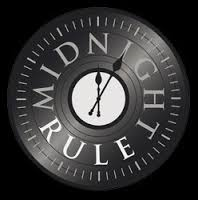 Summary: What is the 2 Midnight Rule? What does it mean for your organization? How does it affect the amount Medicare patient’s pay out of pocket? How does the 2 Midnight Rule affect reimbursement from both inpatient and outpatient perspectives?
Summary: What is the 2 Midnight Rule? What does it mean for your organization? How does it affect the amount Medicare patient’s pay out of pocket? How does the 2 Midnight Rule affect reimbursement from both inpatient and outpatient perspectives?
What is the 2 Midnight Rule?
The 2 Midnight Rule establishes guidelines as to whether or not a physician should admit a patient from outpatient to inpatient. The general rule is if the patient, based upon medical necessity, is expected to require care that will span at least 2 midnights, the patient should be admitted as inpatient, and therefore reimbursable under Medicare Part A. In determining the 2 midnights, all care including outpatient is used in the determination. However, in terms of reimbursement, outpatient is reimbursed via Medicare Part B provisions and inpatient is reimbursed via Medicare Part A provisions.
Which payers are included in the 2 Midnight Rule?
At this time, only Medicare patients are included in this rule. In the future, this may be applied to other types of patients, but currently only Medicare patients.
Which types of facilities must comply with the 2 Midnight rule?
Currently, the only facilities which must comply are:
- All inpatient acute care hospitals
- All critical access hospitals
When is the 2 Midnight Rule effective?
Originally Medicare had set an effective date of October 1, 2013. However, after much controversy and concerns arising from hospitals, Medicare had agreed to postpone the 2 Midnight Rule until March 31, 2014. Additional pushback has extended the deadline to October 1, 2014.
What happens if a patient expected to stay at least 2 midnights, is discharged prior to the 2 midnight threshold?
In certain circumstances, if the documentation in the medical record supports the initial expectation of a 2 or more midnight stay and the patient is released due to unforeseen circumstances, the medical auditor can rule in favor of the 2 midnight stay. What does this mean? It means that clinical documentation becomes more important than ever. Clinical documentation based upon medical necessity can in some rare occasions trump the 2 Midnight Rule.
What happens if the physician is uncertain as to whether the patient will reasonably be expected to remain in the facility 2 or more midnights?
There is a bridge between inpatient and outpatient which puts a bit of gray area and leeway between strict inpatient and outpatient. This bridge is referred to as observation days or beds and generally part of the Emergency Room, but a separate and distinct section. Observation implies the physician has a bit of extra time (generally up to 48 hours) to determine whether or not inpatient admission will be required. Observation is reimbursed under outpatient services and Medicare Part B and does not count toward inpatient days.
In Summary
The correct determination of inpatient versus outpatient status is critical in terms of maximizing reimbursement. There are 3 potential categories:
- If the patient is expected to receive care less than 48 hours, they should be categorized as outpatient
- If there is some gray area as to whether the patient is expected to receive care more or less than 48 hours, they should be placed in observation beds. As soon as the determination is made that the patient will spend 2 midnights or greater, they should be admitted.
- If the patient is expected to receive care spanning 2 midnights or greater, the patient should be admitted as soon as possible.
If you need help establishing protocols and refiguring your emergency department throughput, pleas contact us and we will be happy to provide a free initial consultation.
BHM Healthcare Solutions
Website: www.dev.dev.bhmpc.com
Phone: 1-888-831-1171
Email: re*****@*******pc.com
Request information or a free consultation:

